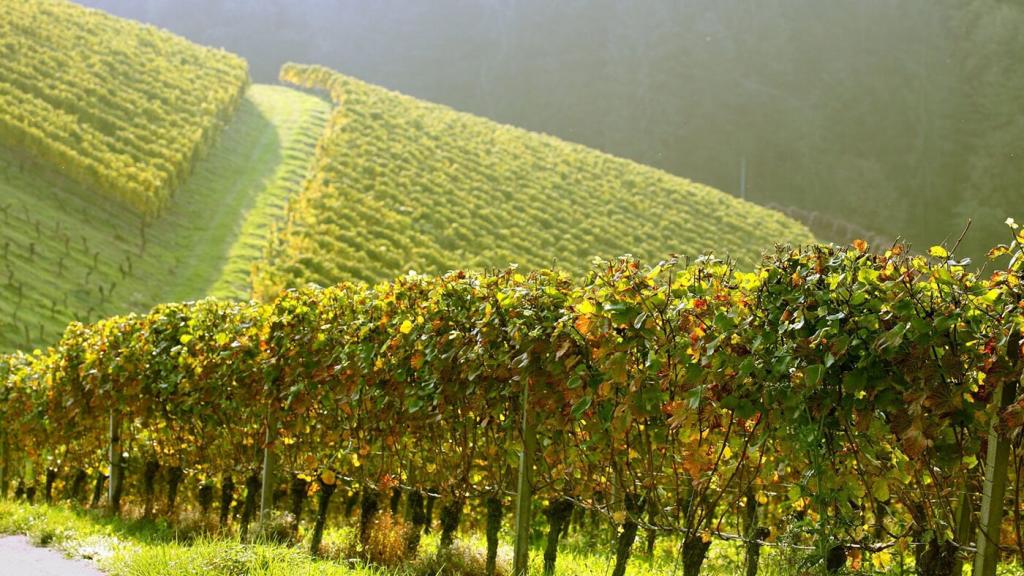François LEROY, winemaker, owner of vines at Auxey-Duresses (also where he lived). In addition, he owned vines at Meursault, Pommard, Chambertin, Musigny, Clos Vougeot, and Richebourg.
At this time he sold his wines through Comptoir des Proprietaires de la Cote-d’Or, in Beaune, as evidenced by a document listing prices dating from 1851, which quoted prices of his Richebourgs and Musignys.
As he wished to enlarge his business, he founded Maison Leroy in 1868.
Francois Leroy’s son, Joseph Leroy, with the intelligent assistance of his wife, Louise CURTELEY, considerably enlarged the small business at Auxey-Duresses. In addition to making wines, he also made liquors and distilled alcohols. Their efforts were rewarded throughout the years with multiple gold medals and other grand prizes: in Brussels in 1897; Dijon in 1898, and La Rochelle in 1911, just to name a few.
Henri LEROY, son of Joseph and Louise, joined the family business in 1919. He diversified and extended it by creating a subsidiary branch that produced eaux-de-vie alcohol at Gensac La Pallue, near Cognac. He also established a state of the art distillery at Segonzac, in the heart of Champagne.
Henri Leroy was a friend of Edmond Gaudin de Villaine. De Villaine’s wife and brother-in-law, Marie-Dominique Chambon and Jacques Chambon, had inherited fully Domaine Romanée-Conti in October 1912. Due to the world-wide financial crises in the 1920s, the Domaine was for sale in a Notary’s office in Paris for many years; potential buyers were waiting further financial difficulties to exact the best price possible. Henry Leroy succeeds in persuading his friend not to sell the shares of Domaine Romanée-Conti.
Henri Leroy succeeded in convincing his friend but Jacques Chambon insisted on selling his parts and so sold them to Henri Leroy in 1942, which made Henri Leroy half owner of Domaine Romanée-Conti which is still held by the Leroy family today.
Henri Leroy devoted himself entirely to Domaine Romanée-Conti for the following forty years. He gave the best of himself to this Domaine; his intelligence, professionalism, his heart, and made it what it is today. He developed it into what is referred to today as the “fleuron de la Bourgogne” or the jewel of Burgundy.
He died in 1980, proud to have kept his promise to his friend Edmond Gaudin de Villaine: “Don’t sell your shares, you will see, we will make this a jewel.”
Lalou BIZE-LEROY, Henri’s daughter, joined the family business, Maison Leroy, in 1955. She became President-Directeur General en 1971. With great devotion and a lot of work, through constant tasting, she undertook to understand the essential characteristics of each “terroir” from each vineyard of Burgundy. For Maison Leroy, still today, she searches unceasingly to purchase the best wines, and for her the best is always yet to come.
Furthermore, each week, she would accompany her father to Domaine Romanée-Conti of which she became, along with Aubert de Villain, Co-Gerante from 1974 to 15 January 1992. Maison Leroy distributed Domaine Romanée-Conti’s wines world-wide (except the United States and Great Britain) until 15 Janaury 1992.
Takashimaya, owner of luxury department stores in Japan, distributor of wines of Maison Leroy since 1972 in Japan, enters the capital of the Maison Leroy in 1988 up to 1/3. It thus facilitates the acquisition of vineyards of Domaine Leroy.
Unfortunately, through the years it became more and more difficult to find growers with wines that met the strict standards worthy of the Maison Leroy label. Therefore, Lalou BIZE-LEROY, made the decision to expand Maison Leroy’s own vineyards. In 1988 she founded Domaine Leroy by purchasing, for Leroy, the estates of Charles Noellat at Vosne-Romanée and of Philippe-Rémy at Gevrey-Chambertin. In total Domaine Leroy now has 21 hectares, 99 ares, 66 centiares.
She immediately began biodynamic cultivation on all the vineyards. From her profound belief that everything is alive: the soil, the grounds, plants, “…as alive as animals and humans…”, she immediately stopped using any products with synthetic chemicals on the vines. From September 1988, all the vines are completely and entirely cultivated under biodynamic principles.
Biodynamic farming—which is not simply a farming method or a trendy commercial practice, but a holistic system, from beginning to end–does not allow any chemical fertilizers, herbicides, insecticides, or pesticides (according to Lalou Bize-Leroy, “all these things kill the life in both the plants and the soil”). Biodynamic farming views nature as a holistic interconnected system; it introduces and incorporates the knowledge of astrological and cosmic influences and its effects on the vines in order to care for them, repair the soil, work the soil, for the care given to the vines all year long, and for the care and methods to create the wines and ultimately until it is put in the bottle at Vosne-Romanée.
